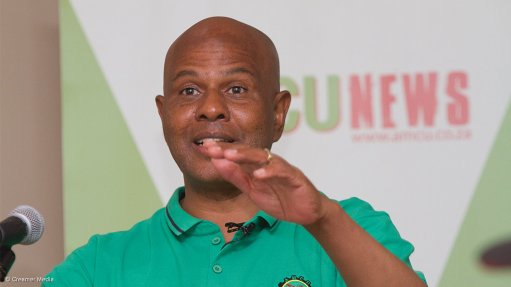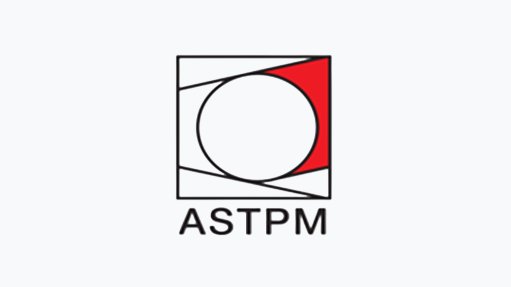Population increase outstrips water infrastructure
With South Africa’s population rapidly increasing in the past 60 years, water scarcity and a lack of adequate infrastructure continue to be of concern, says water components supplier African Pipes, Valves & Fittings director Ben Levitas.
In the past, the traditional way of increasing to accommodate population increases was to invest in water infrastructure such as dams; however, for the past 20 years, very few dams have been commissioned, he explains.
“The most notable projects . . . include the Bivane dam in Parys, North West, in 2000; the Ceres Koekedouw dam, in the Western Cape, in 2001; the Inyaka dam, in Mpumalanga, in 2003; the Nandoni dam, in Limpopo, in 2004; the Kettingspruit dam, in Mpumalanga, in 2006; the Berg dam, in the Western Cape, in 2007; and the Bedford dam, in the Free State, in 2011.”
Levitas mentions that, with some of these projects being almost ten years old, there has been a lack of funding in recent years to commission new projects and upgrade existing infrastructure.
Government’s efforts to address these challenges materialised in the form of the first draft of the National Water Resources Strategy (NWRS1) in September 2004, with a second draft, the NWRS2, completed in 2013. The NWRS focused on water-use efficiency, water protection and conservation, as well as water demand management, to ensure that there would be sufficient water to meet the needs of the growing popu- lation, explains Levitas.
“The targets set out in NWRS1 and NWRS2 became ‘non-negotiable performance areas’ that needed to be implemented immediately in all water-use sectors, especially at municipalities.”
Levitas points out that the NWRS2 acknowledges that South Africa is a water-stressed country facing a number of water challenges and concerns. It identifies three broad objectives: that water supports development and the elimination of poverty and inequality; that it contributes to the economy and job creation; and that water is protected, used, developed, conserved, managed and controlled in an equitable and sustainable manner.
In addition, he highlights that the NWRS2 aims to consider other potential water sources such as water reuse, desalination, ground- water use, rainwater harvesting and recovering water from acid mine drainage.
“Another pertinent issue addressed in the NWRS2 was the waste of nonrevenue water, which amounted to R7.2-billion a year, and had been ignored by municipalities in the past,” says Levitas.
He cites South African Institution of Civil Engineering president Dr Chris Herold, who estimates that the amount of municipality-supplied water lost through leaking pipes comprised 25% of all water supply, a concern during a time of severe drought and water restrictions. According to Herold, the 15% consumption reduction target given to municipalities 20 years ago has not been achieved, and water consumption has increased since then.
“The cumulative loss, since before the drought started until now, amounts to 1.1-billion cubic metres of water through leakage. About 610-million cubic metres of water was lost as a direct result of the drought, while the rest could be attributed to depressed dam storage caused by losses incurred in the two years preceding the drought.”
Herold notes that, if water restrictions had been imposed earlier, it would have made a difference in the current water shortage crisis facing the country. He adds that restricting water supply at night could significantly impact on water losses; this measure is being implemented by the Ekurhuleni municipality.
Levitas attributes the unfortunate reality of no municipalities being able to meet their reduced consumption targets or to significantly reduce the amount of wasted water to ageing water infrastructure and “the demise of good governance protocols in most municipalities, exacerbated by corruption, the misallocation of funds, and poorly trained personnel”.
Moreover, he notes that, as a result of the lack of funding and the appointment of inadequately qualified employees, the South African Bureau of Standards (SABS) has been unable to test any piping or fittings required for integral pipelines since 2008. This has further exacerbated the country’s water supply crisis.
“At the South African Plastic Pipe Manufacturers Association conference held last month, the newly appointed SABS head Ian Plaatjies apologised to the industry for ‘letting it down’ and made it known that the bureau had only 30% of the equipment required to properly test water components.”
He laments that the SABS, which had established an enviable reputation of excellence for many decades, joined the ranks of so many other institutions, owing to political interference, becoming a liability.
Article Enquiry
Email Article
Save Article
Feedback
To advertise email advertising@creamermedia.co.za or click here
Comments
Press Office
Announcements
What's On
Subscribe to improve your user experience...
Option 1 (equivalent of R125 a month):
Receive a weekly copy of Creamer Media's Engineering News & Mining Weekly magazine
(print copy for those in South Africa and e-magazine for those outside of South Africa)
Receive daily email newsletters
Access to full search results
Access archive of magazine back copies
Access to Projects in Progress
Access to ONE Research Report of your choice in PDF format
Option 2 (equivalent of R375 a month):
All benefits from Option 1
PLUS
Access to Creamer Media's Research Channel Africa for ALL Research Reports, in PDF format, on various industrial and mining sectors
including Electricity; Water; Energy Transition; Hydrogen; Roads, Rail and Ports; Coal; Gold; Platinum; Battery Metals; etc.
Already a subscriber?
Forgotten your password?
Receive weekly copy of Creamer Media's Engineering News & Mining Weekly magazine (print copy for those in South Africa and e-magazine for those outside of South Africa)
➕
Recieve daily email newsletters
➕
Access to full search results
➕
Access archive of magazine back copies
➕
Access to Projects in Progress
➕
Access to ONE Research Report of your choice in PDF format
RESEARCH CHANNEL AFRICA
R4500 (equivalent of R375 a month)
SUBSCRIBEAll benefits from Option 1
➕
Access to Creamer Media's Research Channel Africa for ALL Research Reports on various industrial and mining sectors, in PDF format, including on:
Electricity
➕
Water
➕
Energy Transition
➕
Hydrogen
➕
Roads, Rail and Ports
➕
Coal
➕
Gold
➕
Platinum
➕
Battery Metals
➕
etc.
Receive all benefits from Option 1 or Option 2 delivered to numerous people at your company
➕
Multiple User names and Passwords for simultaneous log-ins
➕
Intranet integration access to all in your organisation


















